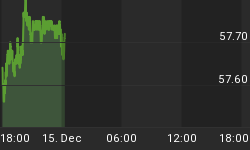The euro could target 1.29/1.30, but a short-term correction is possible. Expectations are mounting that in September, the Federal Reserve (Fed) will ease again and the European Central Bank (ECB) will cut rates one more time. Will it really happen?
Markets are expanding
The economy remains weak in Europe, but in recent days, the numbers have not weakened. In August, according to the Purchasing Managers Index (PMI) report, consumer confidence remained stable at 46.4. This is still below the benchmark of 50. However, the index held up quite well considering Europe is suffering a recession and the debt crisis has not been resolved yet. Most of the bad news has already been discounted. The ECB is now focusing more on growth, although it will take months for production to pick up again. Interest rates could be cut again on September 6. In effect, after moving laterally in the first quarter, the GDP fell 0.2% from April until June of this year. On a yearly basis, production declined for the first time since 2009. Germany was again a top performer. Spain and Italy showed some losses.
Employment data on focus
Will Mr. Bernanke reveal his cards during the annual central banking meeting at Jackson Hole in Wyoming next Friday? Maybe, he will not. August unemployment data, published on September 7, will be critical for a Fed decision on September 13. Weak numbers should inspire Mr. Bernanke, a student of the Great Depression, to act preventively and introduce some other form of easing moves. Quantitative Easing 3 (QE3) remains an option, but perhaps is not a first priority yet. Inflation is not declining fast enough as it did before QE2. However, very bad job numbers could yet bring a third round of quantitative easing to the fore. According to the study of cycles, unemployment is expected to rise again for a final third wave, before finally collapsing. However, over the short-medium term, a decline to 8%-7.5% is still in the cards.
Euro is still supported
EUR/USD has reached a critical level at 1.26. It corresponds to the higher Bollinger Bands and the 100-day moving average (MA). A correction to 1.24 is possible. It will complete the head and shoulders formation. Nevertheless, the market remains well supported and a breakout can target 1.29/30. According to the latest Commitment of Traders (COT) Report, the euro currency is still undervalued compared to the U.S. dollar. In addition, September is one of the worst months for the greenback, which tends to expand during the first part of the year and then to contract until December.
















